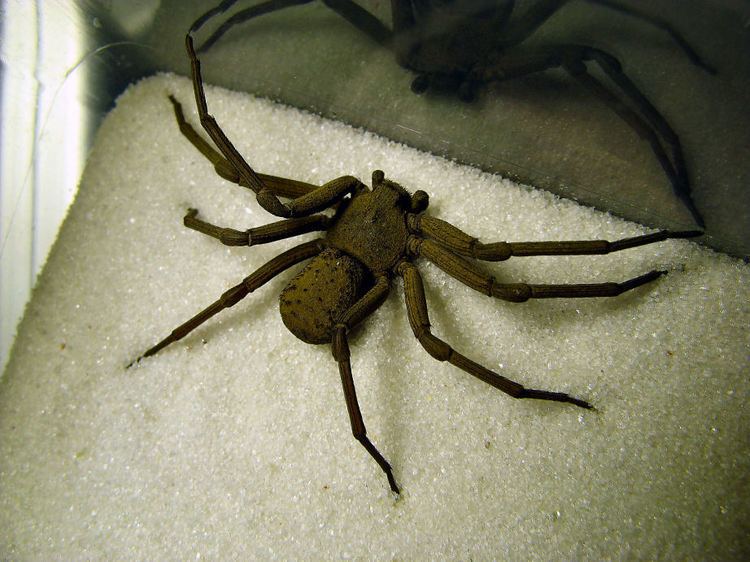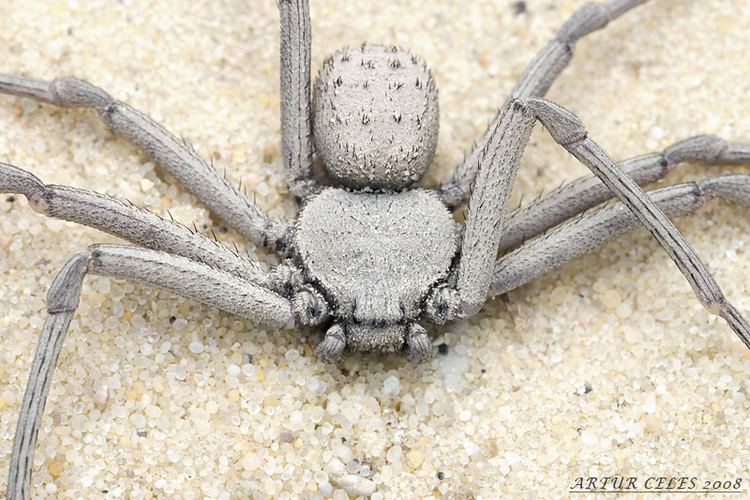Scientific name Sicarius Order Spider | Higher classification Sicariidae Rank Genus | |
 | ||
Lower classifications Six‑eyed sand spider, Sicarius terrosus | ||
Sicarius is a genus of spider, the best known being the six-eyed sand spider of southern Africa. They are also known for the relatively quick catching and killing of their prey.
Contents
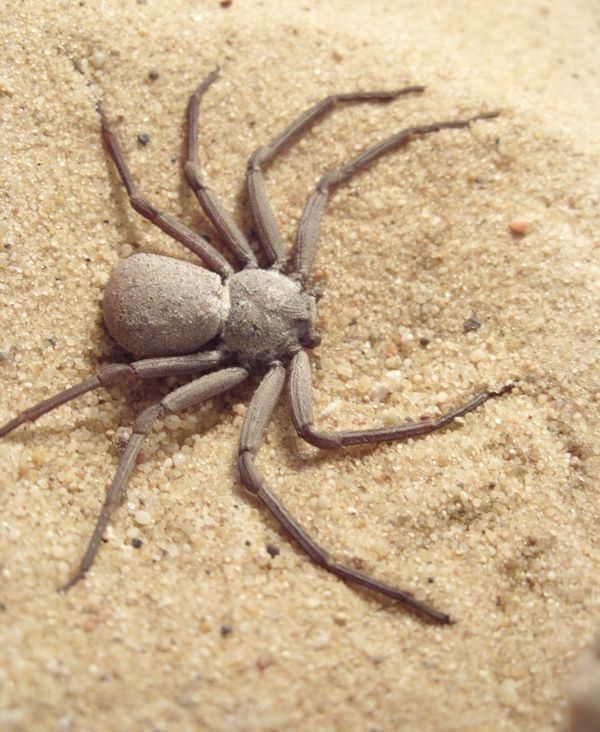
Habitat and appearance
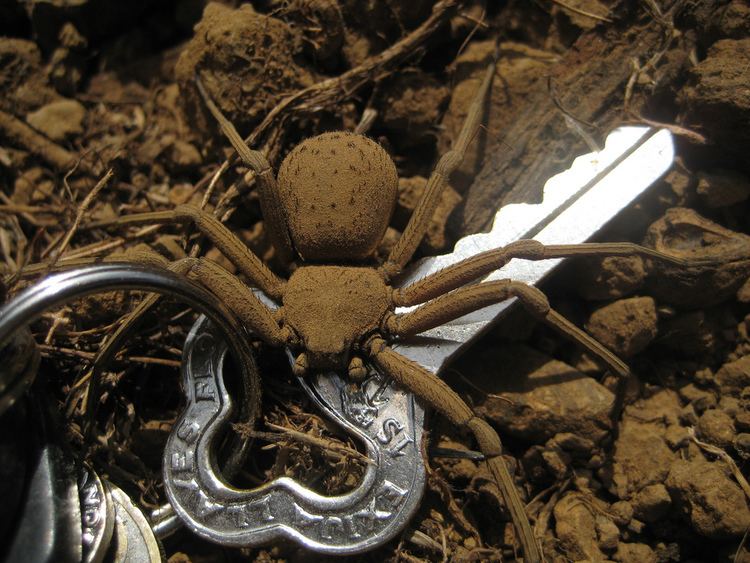
Sicarius are desert and dry country spiders that mainly live in the Southern Hemisphere in South America and Africa (the single exception is the Central American S. rugosus), known primarily for their self-burying behavior. All have six eyes arranged in three groups of two (dyads). Sicarius resembles the crab spiders of the family Thomisidae and the members of the family Homalonychidae. However, Sicarius lacks the characteristic violin-shaped marking of their cousins, the recluse spiders. Individual Sicarius can live for as much as 15 years, which makes these among the longest-lived araneomorphae spiders (some tarantulas can live well over 20–30 years), and can live for a very long time without food or water.
The sicarius spiders are between one and two inches in length.
Venom components and effects

The spiders of this genus (along with the recluse spiders) have potent tissue-destroying venoms containing the dermonecrotic agent, sphingomyelinase D, which is otherwise found only in a few pathogenic bacteria. This venom is highly necrotic in effect, capable of causing lesions (open sores) as large as 2.5 cm in diameter. The genus Sicarius may have more toxic venom than Loxosceles (particularly the African species), based on laboratory experiments with rabbits. Sicariids are found in barren deserts and are able to bury themselves partially in the sand. Because of this, humans seldom come in contact with them. The females produce egg sacs covered with a mixture of sand and silk. The genus is considered to be a living fossil in that it is both quite primitive and distributed in parts of the former Gondwanaland, the huge southern continent that separated during the Mesozoic.
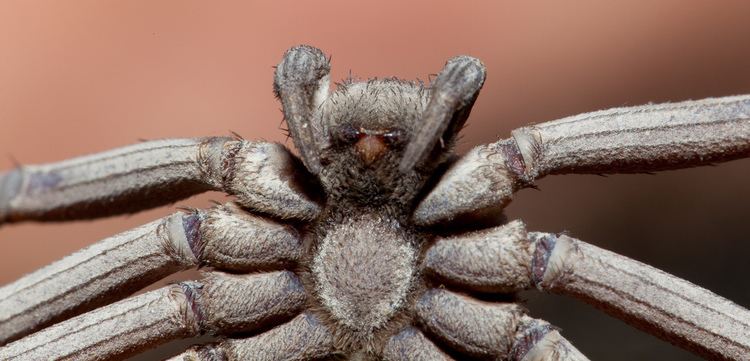
A U.S. patent (number 6,998,389) has been awarded for a means for using Sicariidae venom as a treatment for cancer. [1]
Species
